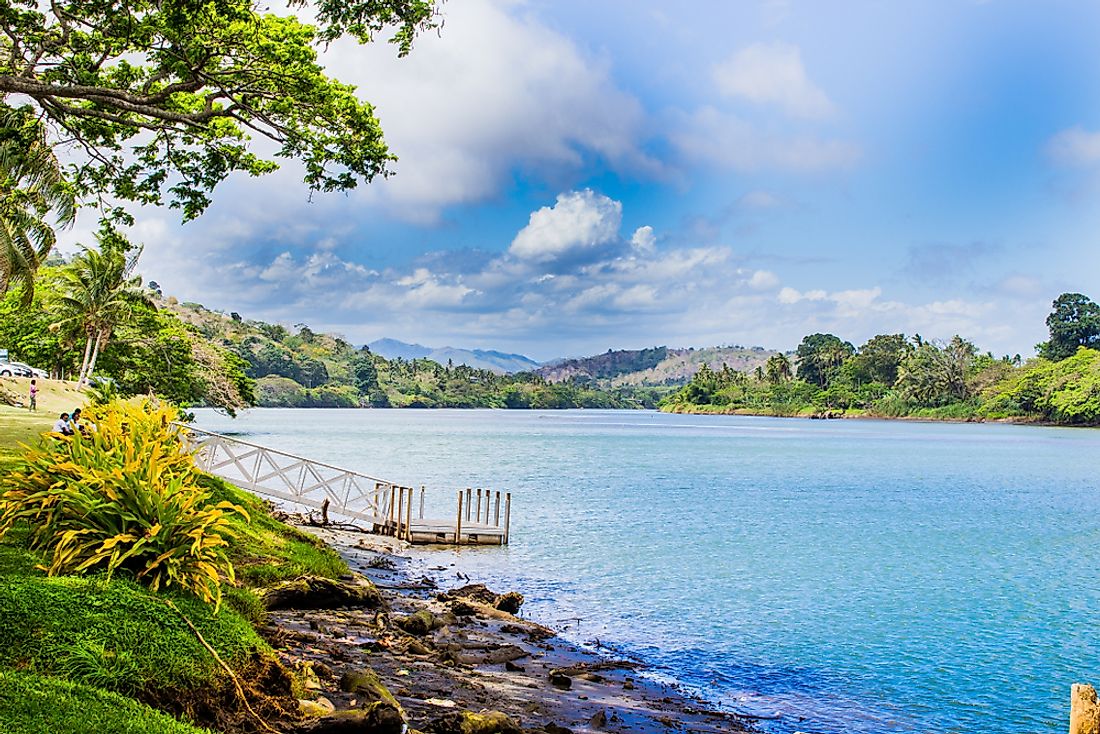The Biggest Islands In Fiji

Fiji is an island nation in Melanesia in the south of the Pacific Ocean. Its closest neighbors are Vanuatu to the west, New Caledonia to the southwest, New Zealand's Kermadec Islands to the southeast, Tonga to the east, the Samoas and France's Wallis and Futuna to the northeast, and Tuvalu to the north. The country has an estimated population of 860,000 people, with over 70% of them living in Fiji’s main island known as Viti Levu. The total area of the country is 7,056 square miles and is made up of more than 330 islands, of which 110 are permanently inhabited islands and over 500 islets. The capital city, Suva is found on the main island of Viti Levu. The two biggest islands of Viti Levu and Vanua Levu, contain 87% of the population. These are the biggest islands in Fiji.
Viti Levu
Viti Levu is the biggest island in Fiji and houses more than 600,000 people. The Fijian capital is also found on the island. It has a total area of 10,389 square kilometers, and measures 146 kilometers long and 106 kilometers wide. The island has developed into its present form through a series of geographical events where it was submerged in the sea and buried under massive amounts of lava and volcanic materials. A mountain barrier forms a roughly north-south axis or backbone. The eastern side of the island experiences heavy rainfall, while the western side is drier most of the time. On the west side of the island, sugarcane production is more dominant while dairy industries and cattle ranching are more prominent on the eastern side. Mount Tomanivi (Mount Victoria), is the highest peak in the country and rises to 1,324 meters. Unique insects such as the Giant Fijian long-horned beetle are only found in this island.
Vanua Levu
Vanua Levu is the second largest island in Fiji with an area of 5,587 square kilometers. It is located 64 kilometers to the north of Viti Levu. The island’s population is located around main towns such as Labasa in the north and Savusavu at the foot of the peninsula. The island is popular with tourists who enjoy diving and yachting. The economy of Vanua Levu is driven by the sugar production industries and tourism.
Ono-i-Lau
Ono-i-Lau consists of islands within a barrier reef system in the Fijian archipelago known as the Lau Islands. It has three central volcanic islands and the three coral limestone islets of Yanuya, Mana, and Niuta. Ono-i-Lau has an area of 450 square kilometers and the third largest island in Fiji. The island is popular for its beautiful surroundings and relaxing beaches. Tourism is a major industry in the island.
Kadavu
Kadavu has a total area of 450 square kilometers and is the fourth largest island. It belongs to the Kadavu Group, a volcanic archipelago consisting of Kadavu, Ono, Galoa and other smaller islands in the Great Astrolabe Reef. It has an airport, a high school, a hospital, and a government station in the main administrative center of Vunisea. It has a population of over 10,000 in the most recent census. Tourism is the main industry here and offers many employment opportunities to the locals.
Other major Fijian islands include Taveuni, Gau, Ovalau and Koro. Each 100 square kilometers or more in land area, these round out the biggest islands in Fiji.
The Biggest Islands In Fiji
| Rank | Biggest Islands in Fiji | Area |
|---|---|---|
| 1 | Viti Levu | 10,388 square kilometers |
| 2 | Vanua Levu | 5,587 square kilometers |
| 3 | Ono-i-Lau | 450 square kilometers |
| 4 | Kadavu | 450 square kilometers |
| 5 | Taveuni | 435 square kilometers |
| 6 | Gau | 143 square kilometers |
| 7 | Ovalau | 106 square kilometers |
| 8 | Koro | 105 square kilometers |











